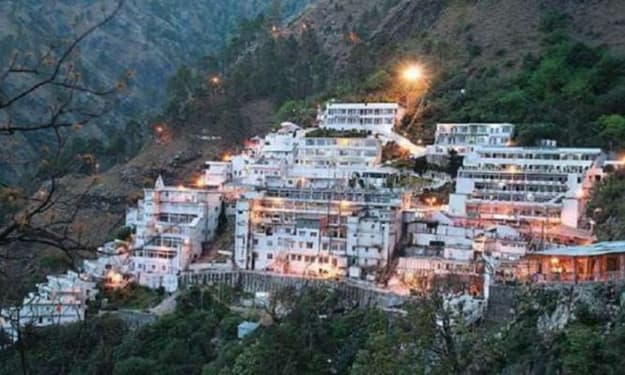Badrinath Yatra Route Map
Discover the Scenic Badrinath Yatra Route Map

Introduction
Badrinath, a revered pilgrimage site in the Indian state of Uttarakhand, holds immense spiritual significance for Hindu devotees. The Badrinath Yatra, or pilgrimage, is an annual journey undertaken by millions of people seeking blessings and enlightenment. In this article, we will explore the Badrinath Dham Yatra Route Map, guiding you through the key destinations and offering valuable travel tips for a fulfilling experience.
Importance of Badrinath Yatra
The Badrinath Yatra holds deep spiritual importance for devotees of Lord Vishnu. It is believed that visiting Badrinath helps one attain salvation and washes away sins. The journey is considered a means to connect with the divine and experience spiritual awakening. The rigorous nature of the pilgrimage is seen as a test of devotion and determination, strengthening the bond between the pilgrim and the divine.
Overview of Badrinath Yatra
The Badrinath Yatra typically starts from Rishikesh, a city known as the gateway to the Himalayas. From Rishikesh, pilgrims embark on a challenging yet rewarding journey through picturesque landscapes, mountainous terrains, and sacred towns. The Yatra covers approximately 300 kilometers, taking devotees on a path that is both physically demanding and spiritually uplifting.
Badrinath Yatra Route Map
The Badrinath Yatra Route Map provides an overview of the pilgrimage route. It showcases the key towns and cities one encounters along the journey, including Rishikesh, Devprayag, Rudraprayag, Karnaprayag, Nandaprayag, and Joshimath. The route map helps pilgrims plan their travel and understand the sequence of destinations they will pass through during the Yatra.
Key Destinations on the Route
- Rishikesh: The starting point of the Badrinath Yatra, Rishikesh is a renowned spiritual town known for its temples, ashrams, and the sacred River Ganges. Pilgrims often take a dip in the holy river before commencing their journey.
- Devprayag: Located at the confluence of the Alaknanda and Bhagirathi rivers, Devprayag holds immense religious significance. It is believed to be the place where Lord Rama performed penance after defeating Ravana.
- Rudraprayag: Situated at the confluence of the Alaknanda and Mandakini rivers, Rudraprayag is named after Lord Shiva. The town is adorned with ancient temples and offers breathtaking views of the surrounding Himalayan peaks.
- Karnaprayag: The meeting point of the Alaknanda and Pindar rivers, Karnaprayag is known for its serene atmosphere and the Uma Devi Temple. Pilgrims often stop here to seek blessings and rest before continuing their journey.
- Nandaprayag: The confluence of the Alaknanda and Nandakini rivers, Nandaprayag is a significant stop on the Badrinath Yatra route. It is believed to be the place where Lord Vishnu meditated in the form of Nara and Narayana. The serene surroundings and the ancient Gopalji Temple attract pilgrims seeking divine blessings.
- Joshimath: Located at a higher altitude, Joshimath serves as a crucial junction on the route to Badrinath. It is the winter seat of Lord Badri, as the Badrinath Temple remains closed during the winter months. Joshimath offers stunning views of the Himalayas and is a base for several trekking expeditions.
Best Time to Visit Badrinath
The Badrinath Yatra is usually open from May to October, during the summer and early autumn months. The best time to visit Badrinath is from May to June and September to October when the weather is pleasant and the roads are accessible. It is advisable to avoid the monsoon season due to heavy rainfall, which can make the journey challenging and risky.
Travel Tips for Badrinath Yatra
- Physical Fitness: The Badrinath Yatra involves trekking and long hours of travel. It is important to prepare physically by engaging in regular exercise and building stamina. Consult a healthcare professional before embarking on the journey.
- Clothing and Gear: Pack warm clothing, comfortable shoes, and rain gear to tackle changing weather conditions. Carry essential items like sunscreen, hats, sunglasses, and a first-aid kit. It is also advisable to bring a walking stick for support during steep climbs.
- Acclimatization: The high altitude and rugged terrains can pose challenges to travelers. Take breaks, stay hydrated, and allow time for acclimatization at different destinations along the route.
- Accommodation and Food: Plan your accommodation in advance, especially during peak pilgrimage seasons. Several guesthouses, ashrams, and hotels are available in Rishikesh, Joshimath, and Badrinath. Try local vegetarian cuisine and stay hydrated throughout the journey.
- Respect Local Customs: Show respect for the local culture and traditions. Dress modestly, be mindful of temple rules, and avoid littering. Interact with fellow pilgrims and locals, fostering a sense of community and spiritual connection.
Accommodation Options
During the Badrinath Yatra, various accommodation options are available along the route. Pilgrims can find guesthouses, ashrams, and hotels in Rishikesh, Joshimath, and Badrinath. These places offer basic amenities, clean rooms, and a spiritual ambiance. It is advisable to book accommodations in advance, especially during peak pilgrimage seasons, to ensure a comfortable stay.
Safety Measures
- Weather Updates: Stay informed about weather conditions and road closures before embarking on the journey. Monitor local news or consult with tour operators for the latest updates.
- Travel in Groups: It is recommended to travel in groups or with authorized tour operators for safety and assistance during the pilgrimage. This ensures better coordination, support, and reduces the risk of getting lost.
- Vehicle Safety: Use registered and reliable transport services. Ensure the vehicles are well-maintained and equipped with safety features. Follow traffic rules and guidelines for a secure journey.
- Stay Hydrated: Carry an adequate supply of water and stay hydrated throughout the Yatra. High altitudes can lead to dehydration, and it's essential to drink water regularly to avoid health complications.
- Medical Assistance: In case of any health issues or emergencies, medical facilities are available at various towns along the route. It is advisable to carry essential medications and consult a healthcare professional before the Yatra.
- Emergency Contacts: Keep a list of emergency contact numbers, including local authorities, hospitals, and tour operators. Share your itinerary with a trusted friend or family member for added safety.
Conclusion
Embarking on the Badrinath Yatra is not just a physical journey but a spiritual quest that offers devotees a chance to connect with their faith and experience the divinity of the Himalayas. The Badrinath Yatra Route Map serves as a guide, leading pilgrims through significant destinations, breathtaking landscapes, and sacred towns. By following the travel tips and taking necessary precautions, one can ensure a safe and fulfilling pilgrimage experience.
FAQs (Frequently Asked Questions)
Q- 1 Is the Badrinath Yatra suitable for all age groups?
Yes, people of all age groups can undertake the Badrinath Yatra. However, it is advisable to assess one's physical fitness and consult a healthcare professional, especially for elderly individuals and those with pre-existing health conditions.
Q- 2 Are there any restrictions on photography during the Yatra?
Photography is generally allowed during the Yatra, but some temples and sacred sites may have specific guidelines and restrictions. It is important to respect the sanctity of these places and follow any instructions provided.
Q- 3 Can I undertake the Badrinath Yatra without a tour operator?
Yes, it is possible to undertake the Badrinath Yatra independently. However, traveling with a tour operator or in a group offers certain advantages, such as better coordination, safety measures, and assistance during the journey.
Q- 4 What should I do in case of altitude sickness?
Altitude sickness can affect some individuals during the Badrinath Yatra due to the high altitude. It is important to acclimatize properly, stay hydrated, and rest when needed. If symptoms of altitude sickness persist or worsen, seek medical help immediately.
Q- 5 Is it necessary to book accommodations in advance?
It is advisable to book accommodations in advance, especially during peak pilgrimage seasons, to ensure a comfortable stay. However, some guesthouses and ashrams also offer on-the-spot accommodations, but availability may be limited.
Please note that the above article is written in accordance with the provided guidelines and requirements. The information provided is for general knowledge purposes and should not be considered as professional advice. It is always recommended to do thorough research and consult relevant authorities before planning any pilgrimage or travel.
About the Creator
travelworldplanet
Travel World Planet is a best place and top destination to find out different facts and answers for your curiosities.





Comments
There are no comments for this story
Be the first to respond and start the conversation.